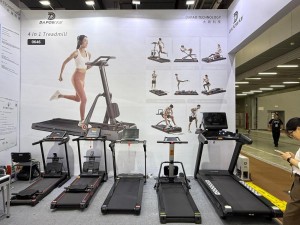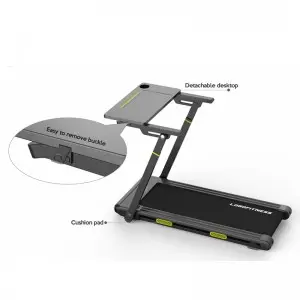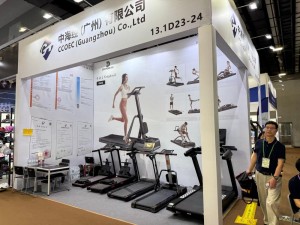Among modern fitness equipment, treadmills are widely popular for their convenience and efficiency. However, as the usage frequency increases, the energy consumption issue of treadmills has gradually become a focus of users’ attention. Understanding the energy consumption of treadmills and mastering energy-saving skills not only helps to reduce usage costs but also minimizes the impact on the environment. This article will provide you with a detailed analysis of the energy consumption of treadmills and energy-saving tips, helping you achieve energy conservation and emission reduction while enjoying the fun of fitness.

First, energy consumption analysis of the treadmill
1. Motor power
The energy consumption of a treadmill mainly depends on the power of the motor. The power range of common treadmill motors varies from 1.5 horsepower (HP) to 4.0 horsepower. Generally speaking, the greater the power, the higher the energy consumption. For example, the energy consumption of a 3.0HP treadmill during operation is approximately 2000 watts (W), while that of a 4.0HP treadmill may reach 2500 watts.
2. Usage time
The usage time of the treadmill is also an important factor affecting energy consumption. If used for one hour every day and 30 hours every month, the monthly energy consumption of a 3.0HP treadmill is approximately 60 kilowatt-hours (kWh). According to the local electricity price, this may result in certain electricity expenses.
3. Operating speed
The running speed of the treadmill also affects energy consumption. Higher speeds usually require more energy to maintain. For example, the energy consumption when running at a speed of 10 kilometers per hour may be approximately 30% higher than that when running at a speed of 5 kilometers per hour.
Second, energy-saving techniques
1. Choose power reasonably
When purchasing a treadmill, choose the appropriate motor power based on your actual needs. If the main purpose is jogging or walking, a treadmill with lower power can be chosen to reduce unnecessary energy consumption.
2. Control the usage time
Arrange the usage time of the treadmill reasonably to avoid prolonged idling. After use, turn off the power in time to reduce standby energy consumption. Some treadmills have an automatic shutdown function that can shut down automatically after a period of inactivity, which helps to reduce unnecessary energy consumption.
3. Adjust the running speed
When using a treadmill, adjust the running speed reasonably according to your physical condition and exercise goals. Avoid running at high speed for a long time. This not only helps to reduce energy consumption but also lowers the risk of injury.
4. Utilize energy-saving modes
Many modern treadmills are equipped with energy-saving modes that can automatically adjust the motor power and running speed without affecting the usage effect, thus achieving energy conservation. Enabling the energy-saving mode can effectively reduce energy consumption.
5. Regular maintenance
Regularly maintain the treadmill to ensure that the equipment is in the best operating condition. Cleaning the running belt, inspecting the motor and lubricating the components can improve the operating efficiency of the treadmill and reduce energy consumption.

The energy consumption of a treadmill mainly depends on the motor power, usage time and running speed. By rationally choosing the power, controlling the usage time, adjusting the running speed, utilizing energy-saving modes and conducting regular maintenance, the energy consumption of the treadmill can be effectively reduced, as well as the usage cost and environmental impact. It is hoped that the analysis and energy-saving tips in this article can help you better manage the energy consumption of the treadmill and achieve the dual goals of healthy fitness and energy conservation and environmental protection.
Post time: May-21-2025


